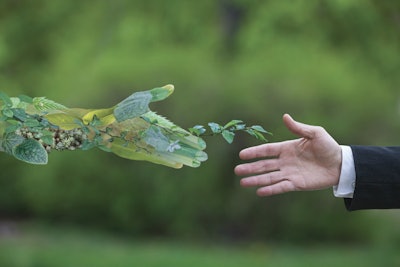
In 1994, business writer John Elkington developed the Triple Bottom Line (TBL) concept, with his now famous 3 Ps: People, Planet and Profit. The concept aimed to go beyond traditional accounting and was intended to evaluate companies’ performance in generating value for society.
The 3 Ps have been widely adopted by diverse industries, including the poultry sector, and have contributed to embedding sustainability into companies’ objectives and ways of doing business.
Interestingly, in a symbolic gesture, Elkington decided to “recall the concept” in 2018, not because it had failed to influence, but because it was not sufficient to “bury the single bottom line” paradigm.
The 3 Ps did not aim to be an accounting tool to measure the reduced profit resulting from sustainability gains. On the contrary, they aimed to fuel a new, sustainable economy based on innovation, with opportunities that have been estimated at US$12 trillion by 2030.
The third P
The sustainability discussion has evolved since the TBL and 3 Ps first emerged. All industries, particularly resource intensive ones, have been put under the microscope. Animal protein production is no exception.
In parallel, reducing antimicrobial resistance has become a global priority, animal welfare is a focus in some countries, and global warming has escalated up the political agenda.
As with any multifactorial problem, some trade-offs are unavoidable. However, there is no trade-off between the third P – profit – and sustainability. Transformative, sustainability-driven change with a long-term net positive economic impact is possible for the poultry industry.
Examples of such disruptions are the removal of antibiotic growth promoters from feed and layer cage bans in some markets to align with consumers’ values. Sustainability is not a zero-sum game between producers and consumers.
You can’t manage what you don’t measure
On the “Planet” front, some countries and regions have led the implementation of environmental sustainability systems, such as phosphorous or nitrogen management in animal agriculture. However, the reality is that, globally, there is a long way to go.
A tipping point, however, has occurred over the last decade in sustainability’s importance for large corporations, fueled by pressure from investors.
We are witnessing the start of a movement to holistically quantify the environmental footprint of animal production, proactively managed by producers and, recently, we have seen the development of data platforms to facilitate this.
As a friend of mine repeatedly says: “You don’t need to wait for someone to throw average numbers at you. You need to know and act on your own numbers”. You can only manage environmental sustainability if you can measure it and understand your production system.
Such knowledge can propel decision making, including in ingredient purchasing and feed additive choice, health programs or manure management, to enhance sustainability.
Feed accounts for the largest part of animal production’s environmental footprint, and any productivity improvements generally translate into smaller footprints. Moreover, as the environmental sustainability levers in different production systems are revealed, and consumer interest in sustainability increases, new opportunities for innovation appear.
Previously under-valued areas such as water efficiency, nitrogen cycle management, local ingredient processing, energy source optimization, and plastic-free packaging are starting to appeal to investors.
The poultry industry’s ability to keep its “protein of choice” status will depend on its capacity to innovate and deliver measurable sustainability advances. Rather than a limitation, this is an unbelievable opportunity.















